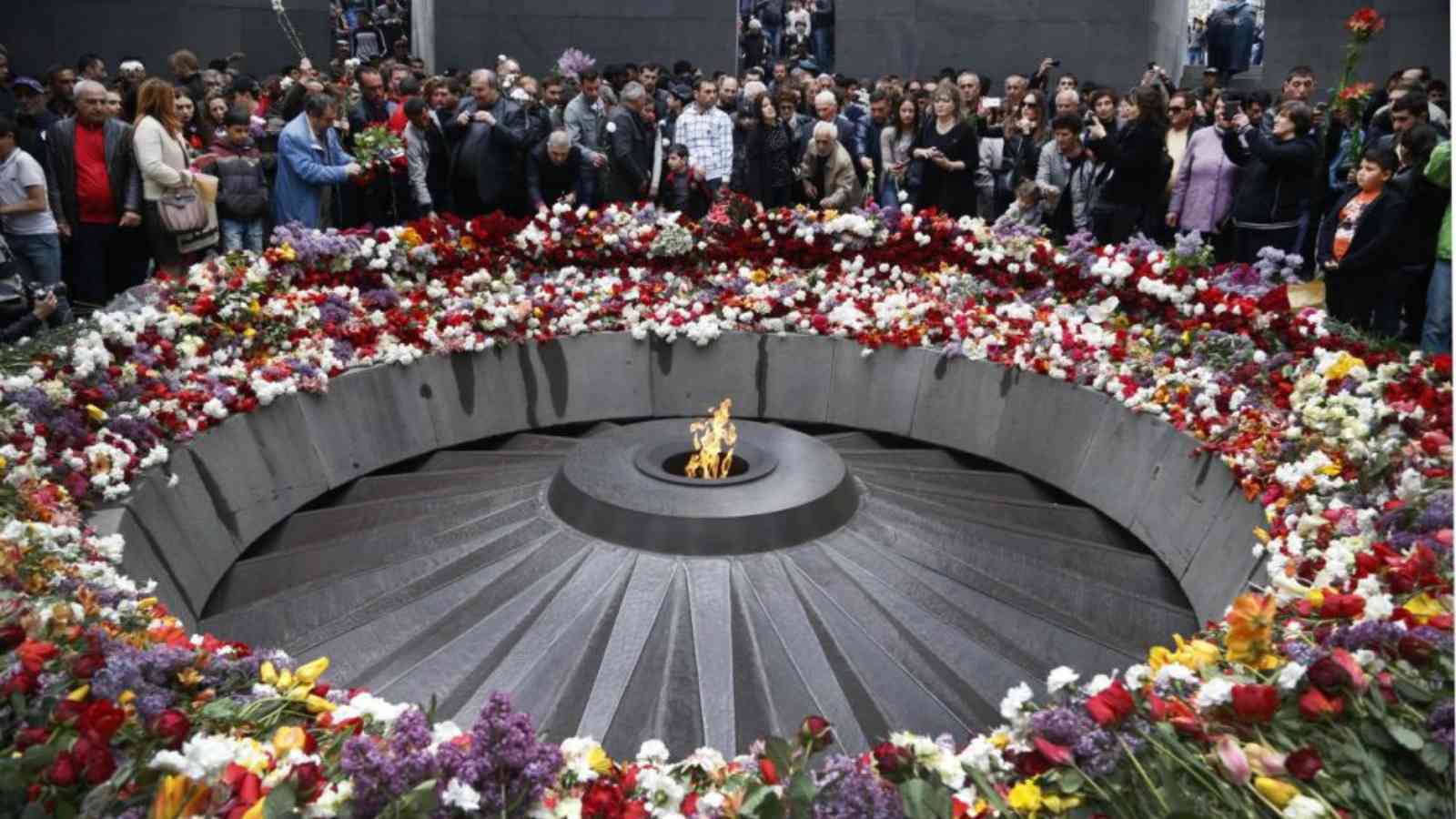The 24th of April marks Armenian Genocide Remembrance Day. Armenian Genocide Remembrance Day, also known as Genocide Memorial Day, is a public holiday in Armenia that Armenians around the globe observe to mourn and commemorate the genocide. It is observed annually to remember the victims of the Armenian Genocide, which took place between 1915 and 1923. Hundreds of thousands of individuals visit the Tsitsernakaberd Genocide Memorial in Yerevan, the capital of Armenia, to lay flowers at the memorial’s eternal flame. On April 24 we remember the Armenian notables who were exiled from the Ottoman capital in 1915, including numerous Armenian scholars and community leaders, the majority of whom were slain. This deportation was a precursor to the subsequent events.
The background of Armenian Genocide Remembrance Day
World-wide, ethnic Armenians observe April 24 as a day of profound grief. It commemorates the day on which authorities of the Ottoman Empire, the ancestor of modern Turkey, gathered up and murdered hundreds of Armenian community leaders in what would become Istanbul. Previously, it was known as Constantinople. This resulted in the fatalities of more than one million Armenians.
Since the 15th century, Armenia was a component of the Ottoman Empire. The Armenian population flourished and increased throughout the Ottoman Empire, and it had reached a sizeable proportion by the time the majority of modern-day Armenia came under Russian rule in the late 19th century. The Ottoman Empire joined the German and Austro-Hungarian empires in World War I in 1914. The religious authorities declared a religious war against all Christians, with the exception of those who took their side. This was terrible news for Christian Armenians, as the Turkish government viewed the Armenian community as an enemy to be vanquished.
Consequently, Armenians were persecuted and killed. Approximately 400 thousand Armenians remained in Turkey in 1923, compared to more than two million at the time of the persecution. On Armenian Genocide Remembrance Day, crowds of Armenians gather at the Tsitsernakaberd Genocide Memorial to honour the victims of the genocide and to lay flowers at the memorial’s eternal flame. Following the 1965 Yerevan demonstrations, in which one hundred thousand people marched for 24 hours through the streets of Yerevan to commemorate the 50th anniversary of the deportations, construction of the memorial commenced. They requested that the Soviet authorities officially recognise it as genocide. In 1988, Armenia designated April 24 as a national day of remembrance.
National Lost Dogs Awareness Day 2023: Date, History, Facts about Missing Pets
National English Muffin Day 2023: Date, History, Facts, Activities
Movie Theatre Day 2023: Date, History, Facts, Activities
5 FACTS CONCERNING THE ARMENIAN GENOCIDE
This flower represents the Armenian Genocide.
The Armenian Genocide occurred between 1915 and 1918, with recurrent acts of violence occurring between 1920 and 1923.
1948 marked the adoption of the Convention on the Prevention and Punishment of the Crime of Genocide, nearly 30 years after the Armenian Genocide.
The overwhelming majority of Armenians in the United States are survivors’ children and grandchildren.
Between 1914 and 1923, between 300,000 and two million individuals perished in the Ottoman Empire.
ARMENIAN GENOCIDE REMEMBRANCE DAY DATES
| Year | Date | Day |
|---|---|---|
| 2023 | April 24 | Monday |
| 2024 | April 24 | Wednesday |
| 2025 | April 24 | Thursday |
| 2026 | April 24 | Friday |
| 2027 | April 24 | Saturday |




